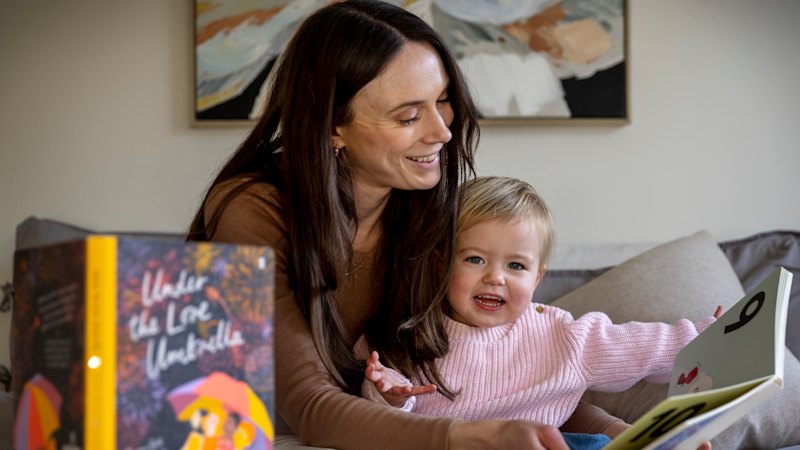The Decline of Bedtime Stories: Are Australian Parents Reading to Their Children Less?
For many, the image of a parent reading a bedtime story conjures feelings of warmth, connection, and the magic of imagination. But is this cherished tradition fading in modern Australian households? Recent data suggests a concerning decline in the number of parents reading aloud to their children, raising questions about the impact on literacy and the parent-child bond.
Nicola Trotman, a PR director from Melbourne, vividly remembers her childhood love of reading. Eager to pass this passion on to her daughter Sadie, she made bedtime stories a non-negotiable part of their routine. “After bath time, we read stories to her. It’s a habit we really enjoy and that she really enjoys,” she explains. Nicola has witnessed firsthand the benefits of reading aloud, noting its significant impact on Sadie’s language development. “You can have almost conversations with her… she knows all her animals, she’s learning colours at the moment. She knows her ABCs already.”
However, not all Australian children are experiencing the same literary immersion. Studies reveal a worrying trend: fewer parents are prioritising reading aloud to their children. One study found a significant percentage of parents admit that they are simply too busy to incorporate reading into their daily routine. Furthermore, many parents report that their child’s short attention span makes reading a challenge.
Why the Decline? Factors Contributing to the Shift
Several factors contribute to this decline. Professor Robyn Cox, a literacy and education expert at The University of Tasmania, points to increased financial pressures and the pervasive presence of screens as key culprits. With more parents experiencing burnout and a rise in dual-income households (reaching 73% in 2024), finding the time and energy for bedtime stories can be a struggle.
Child and adolescent psychologist Deirdre Brandner echoes this sentiment, highlighting the competing demands and pressures faced by modern parents. Children are increasingly accustomed to fast-paced, visually stimulating entertainment, making the relatively passive activity of reading seem less appealing.
The way reading is taught in schools may also play a role. Cox suggests that a shift towards a more scientific, less pleasure-based approach to reading instruction might have inadvertently led some parents to believe that reading is solely the school’s responsibility.
The Undeniable Importance of Reading Aloud
Despite the challenges, experts emphasise the critical importance of reading aloud to children. The benefits extend far beyond simply learning to read.
- Literacy Skills: Reading aloud builds essential literacy skills, including constrained skills like alphabet recognition and unconstrained skills like vocabulary, fluency, and comprehension. These unconstrained skills are built upon throughout a lifetime.
- Emotional Connection: Brandner stresses the emotional benefits of sharing stories. “It is about that moment of being with them and sharing a story, and then that is a banked memory… It also sends a message to your child that at the end of a busy day, [they] are the most important thing,” she says.
- Future Reading Habits: Children who are read to are more likely to become adults who enjoy reading and who, in turn, read to their own children.
Making Time for Stories: Practical Tips for Busy Parents
For busy parents, incorporating reading into the daily routine may seem daunting. However, even small efforts can make a significant difference.
Ailish Woodhill, a Sydney mum, remembers the bond she formed with her mother through bedtime stories. She now shares this tradition with her six-month-old son, Mackenzie. “It’s nice to read to him books that I always read when I was little,” she says. Ailish and her husband have made reading a priority, integrating it into Mackenzie’s bedtime routine.
“We just made it part of the bedtime routine every night,” she explains. “So it’s a set time off, he has his bath and then we read three to four books to wind down. I do find it [parenting] is quite ‘go, go, go’, so it’s nice to just relax with him.”
Here are some practical tips for making reading a more regular part of your family life:
- Schedule it: Treat reading time as a non-negotiable appointment in your daily schedule.
- Start small: Even 10-15 minutes of reading can be beneficial.
- Make it fun: Choose books that you and your child enjoy. Use silly voices, act out scenes, and engage with the story.
- Read aloud to older children too: The benefits of reading aloud aren’t limited to young children. Reading to older kids can foster a love of literature and spark meaningful conversations.
- Visit your local library: Libraries offer a vast selection of books, free reading programs, and a welcoming environment for families.
Digital Aids: A Supplement, Not a Substitute
With the rise of digital technologies, many parents are turning to audiobooks, podcasts, and YouTube videos of children’s books. While these resources can be helpful, experts caution against relying on them as a complete substitute for one-on-one reading time.
Brandner believes that exposure to literature in any form is beneficial. Cox suggests using technology as a starting point for conversation. “Say, ‘Mummy’s busy, I’ve got to do the dishes, I’m going to put on the YouTube video of Possum Magic. And when it’s over, let’s talk about it.’”
Ultimately, the most important thing is to create a positive and engaging reading experience for your child. Whether it’s a classic picture book or a digital audiobook, the act of sharing stories can foster a lifelong love of reading and strengthen the bond between parent and child.

